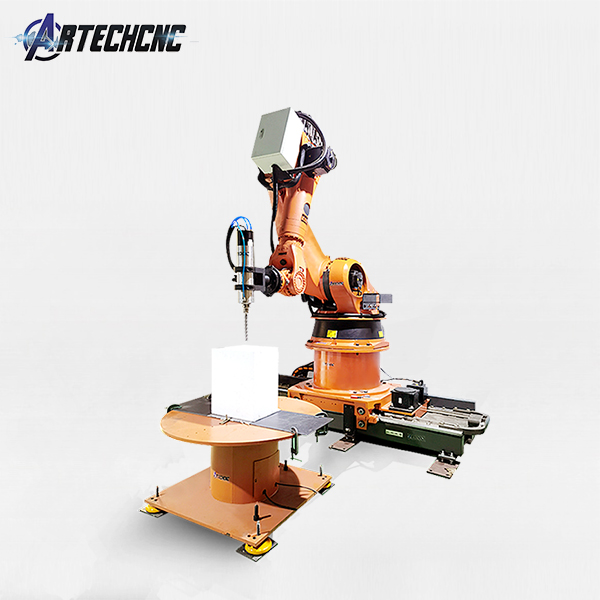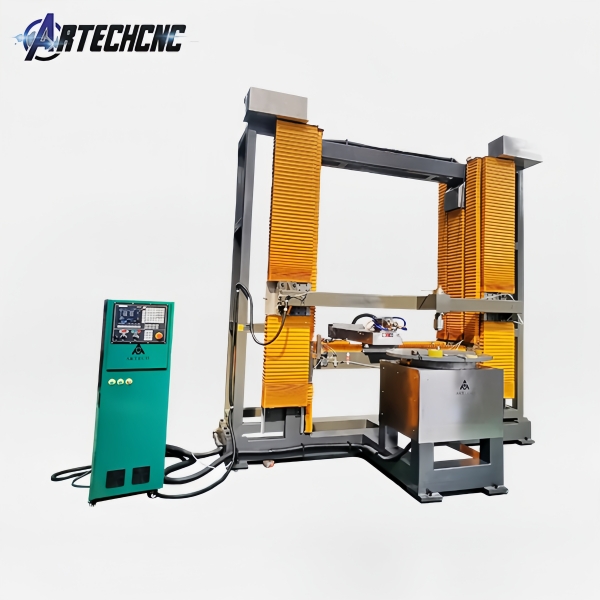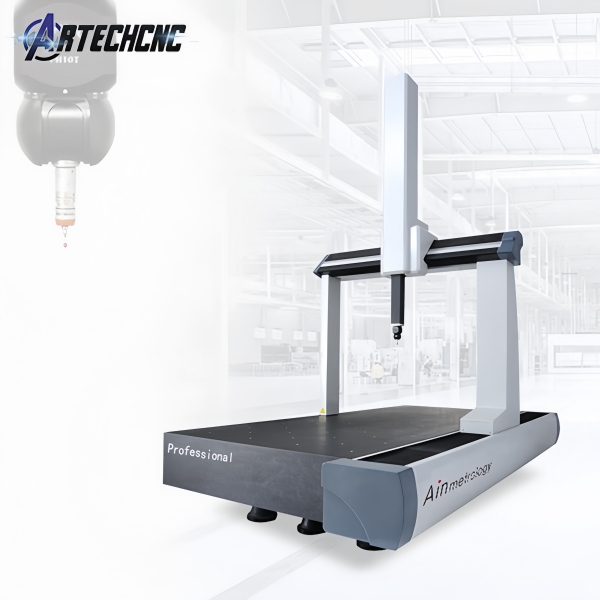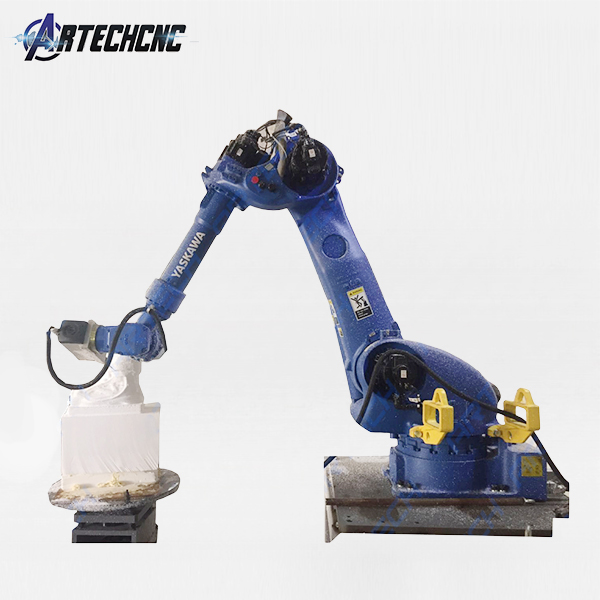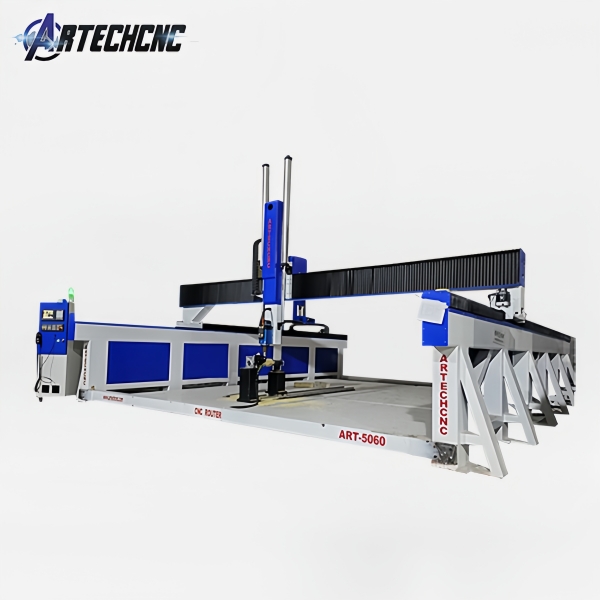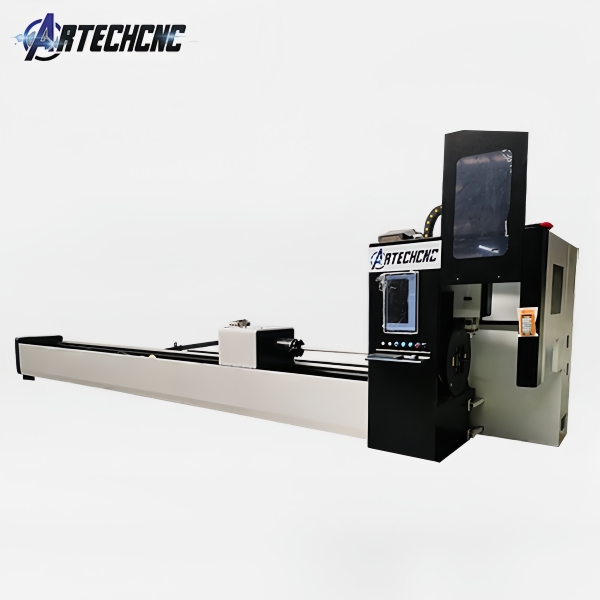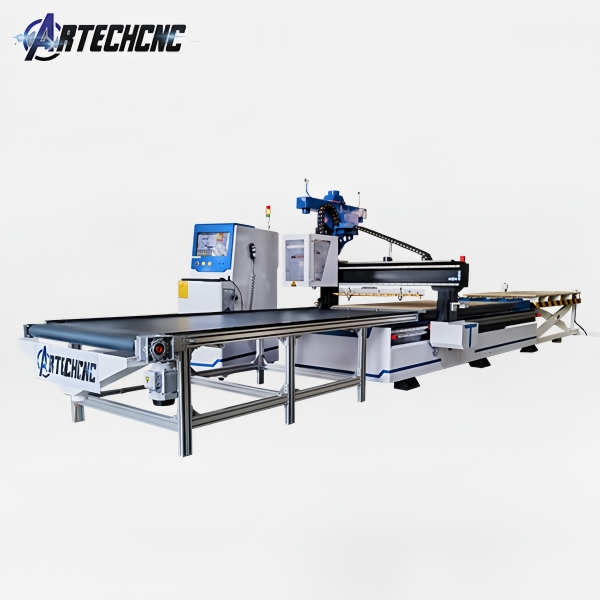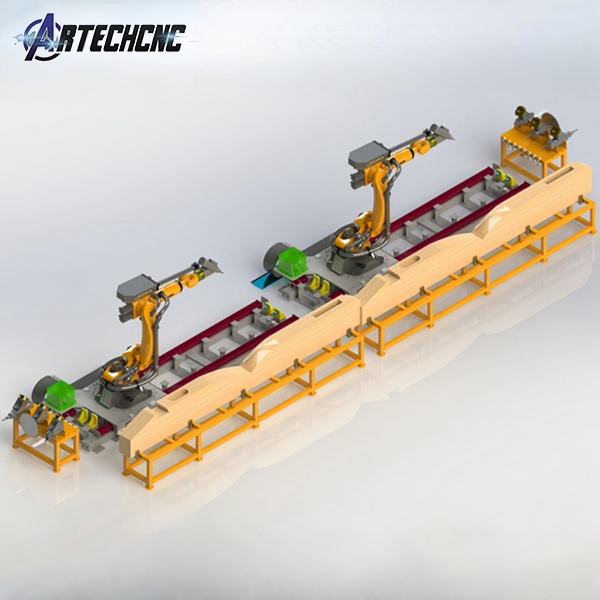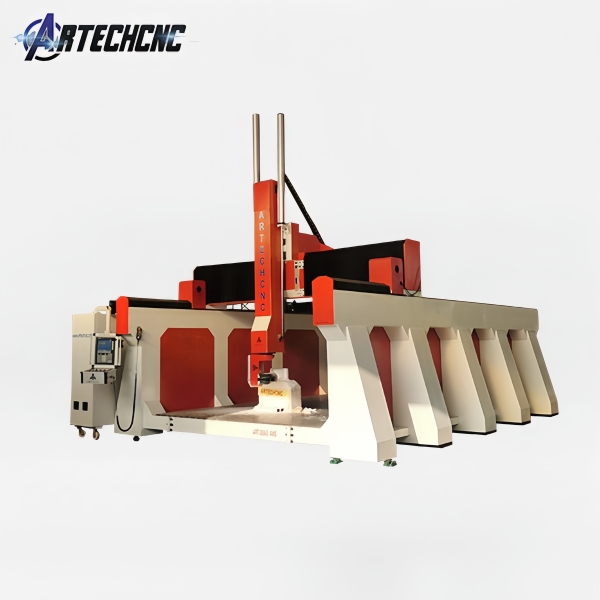Milling Robot Arm vs. 5-Axis CNC Router: The Tug-of-War Between Flexible Production and Precision Machining in Manufacturing
Amid the accelerated iteration of intelligent manufacturing technologies, two key processing equipments — Milling Robot Arms and 5-Axis CNC Routers — have emerged as core choices for the transformation of the manufacturing industry. The former, leveraging its high flexibility and cost advantages, is capturing the small-batch and customized production market, while the latter, relying on ultra-high precision, maintains a firm foothold in the field of precision machining. Behind this technological rivalry lies the manufacturing industry's distinct demands for "flexibility" and "precision," which also reflects the in-depth transformation of production models in the sector.
Core Performance: The Ultimate Trade-off Between Degrees of Freedom and Precision
The fundamental difference between the two equipments originates from their mechanical structure designs. Milling Robot Arms are typically equipped with 6-axis or even 7-axis linkage systems. For instance, certain products like KUKA's 7-axis milling robot arm boast up to 7 degrees of freedom, enabling multi-angle machining of complex curved surfaces. With a working radius of up to 1500mm, they can easily reach machining dead corners that are inaccessible to traditional equipments. This high maneuverability gives them a natural edge in processing irregularly shaped parts and contours — such as in the machining of curved trim parts for automotive interiors and customized furniture carving — where full-process machining can be completed without multiple clamping operations.
In contrast, 5-Axis CNC Routers adopt a gantry structure and achieve spatial movement through the classic configuration of "3 linear axes + 2 rotary axes." Their core competitiveness lies in extreme rigidity and precision. Data shows that the stiffness of 5-Axis CNC Routers can reach over 50 Newtons per micrometer, while that of Milling Robot Arms is usually less than 1 Newton per micrometer. This difference is directly translated into machining precision: the former can control the repeat positioning accuracy within ±0.02mm, with a minimum surface roughness of Ra 0.4μm, making it suitable for fields with strict precision requirements such as aerospace carbon fiber components and medical orthopedic implants. Additionally, 5-Axis CNC Routers, with tool diameters typically ranging from 0.2mm to 3mm, excel in light cutting and fine carving, whereas Milling Robot Arms are more suitable for material removal processing of medium and large-sized workpieces.
Cost and Efficiency: The Divide Between Mass Production and Flexible Manufacturing
Cost control is a key consideration for equipment selection in manufacturing. Milling Robot Arms have significant advantages in initial investment and operation and maintenance costs. Their market price is 30%-70% lower than that of 5-Axis CNC Routers of the same specification. Moreover, second-hand Milling Robot Arms can be quickly modified to adapt to milling tasks, further lowering the investment threshold. Take a furniture factory as an example: after introducing a 6-axis Milling Robot Arm, the equipment investment was reduced by 40%. Meanwhile, due to its multi-functional expansion capabilities (such as welding, grinding, and inspection), the utilization rate of production line equipment increased to over 85%.
However, in mass production scenarios, the efficiency advantage of 5-Axis CNC Routers becomes prominent. Their fixed workbench design and high-rigidity structure support high-speed cutting, with spindle speeds reaching up to 24,000 rpm. In the processing of light materials such as wood, foam, and composite materials, their production efficiency is 20%-30% higher than that of Milling Robot Arms. Particularly in the aerospace field, 5-Axis CNC Routers can complete the complex curved surface machining of turbine blades in one go, avoiding vibration errors that may occur in Milling Robot Arm processing. The scrap rate is controlled below 0.5%, far lower than the 2%-3% of Milling Robot Arms.
Industry Applications: A Market Pattern Where Each Excels in Its Own Field
At present, a clear division of applications has formed in the market. With its flexibility advantages, Milling Robot Arms have become the first choice for small-batch production, prototype manufacturing, and multi-variety switching scenarios. In the automotive parts industry, they can quickly adapt to the milling of bumpers and the carving of interior parts for different vehicle models; in the architectural decoration field, they efficiently complete stone reliefs and metal art processing; in educational and research institutions, their programmability and multi-functionality make them core tools for innovative design verification.
On the other hand, 5-Axis CNC Routers dominate the field of high-precision and mass production. In the medical device industry, they are used to process precision components such as customized dental crowns and bone screws; in the aerospace field, they undertake the light cutting tasks of carbon fiber wing components and engine impellers; in the mold manufacturing industry, they can achieve high-precision carving of injection mold cavities, eliminating the need for subsequent polishing due to excellent surface finish. Notably, with the widespread application of composite materials in new energy vehicles, the demand for 5-Axis CNC Routers in scenarios such as the processing of cooling channels in battery casings is growing rapidly.
Technological Integration: The Future Choice of Manufacturing
Industry experts point out that the two types of equipments are not completely opposed but show a trend of complementary integration. Some high-end manufacturing enterprises have begun to build hybrid production lines combining "robot arms + 5-axis CNC": Milling Robot Arms are responsible for workpiece loading/unloading, rough machining, and subsequent grinding, while 5-Axis CNC Routers focus on precision machining. This setup not only leverages the flexibility of robot arms but also ensures product precision. Furthermore, with the development of AI visual guidance technology and adaptive control algorithms, the precision gap of Milling Robot Arms is gradually being narrowed. Some high-end Milling Robot Arm products have achieved a repeat positioning accuracy of ±0.07mm, which is expected to enable them to enter the mid-end precision machining market.
For manufacturers, the core of equipment selection lies in clarifying production needs: if the focus is on small-batch, customized, and multi-variety production, and the precision requirement is within ±0.1mm, Milling Robot Arms are the cost-effective choice; if the focus is on mass, high-precision, and high-consistency production — especially involving fine processing of non-metallic materials — 5-Axis CNC Routers remain irreplaceable core equipments. The ultimate winner in this technological rivalry is likely to be an integrated solution that achieves a perfect balance between "flexibility and precision."


